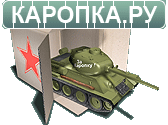Another week where I have been spending most of my time apart form work, working on getting Resolution up and running. I finally built the ballast tank for Resolution out of a PVC drain pipe. I use the thicker PVC pipe as this tank will be under pressure. I have used some green PVC cement. This stuff seriously glues and smells positively alcoholic! I made a pick up out of Nylex garden nozzle length and with a heat gun simply bent it to the right angle. It enters the tank high and drops down to have the tip resting against the bottom of the tank, in between two baffles. After glassing down some aluminium cross bars I then bolted down the tank near the middle of the hull. I am just in the middle of trimming her at the moment...
I have done a little work on Papa. I have started creating the first of the moulds that will be used for making the final parts for the kit. I have started off with the propellers. A month ago or so I did a fair bit of filling and sanding to finally get the props to be just what I want them to be. Now it was time to start creating the tooling for these.
I have found propellers to have the most complex geometry of any parts that I make for a submarine, however I find that setting up the moulds for them probably the easiest of any parts I make. These moulds differ in that you pour down into the middle of the top mould, unlike fins and so forth where you pour down the part line into the mould. The flashing is still along the equator its just that you pour from the top. This means that you have to think about you venting and pour geometry a little differently. I am confident that the design that I have come up with will once again work well, so far it has for Komsomolets and Borei.
I have drilled out a small hole in the middle of some laminated board. This is where the centre rear hub of the prop will sit. I mark the outline of where the propeller will sit and the area taken up by the clay filleting around the edges. I trace a rim for where the acrylic tube will contain the silicon. I then lightly drill holes in and around the pattern, thus creating the registry points. Then I give a tiny dab of silicon to press and hold the propeller, hub facing down. Once done I then add clay around the rims of the blades taking the leading edge and filleting down to the base. Once this is done I can then silicon down the acrylic tube that will be the container. This is the easiest half of a mould to make.
Now it is simply a case of pouring the silicon. My colour for Papa is a beige light brown that is actually a mix of green orange and blue.
Once this has been pulled, I can then look at creating the second half of the mould, the one from which you pour the resin and use a 2mm thread insert to get the shaft thread embedded in the resin.
Next week....
David H

Leave a comment: